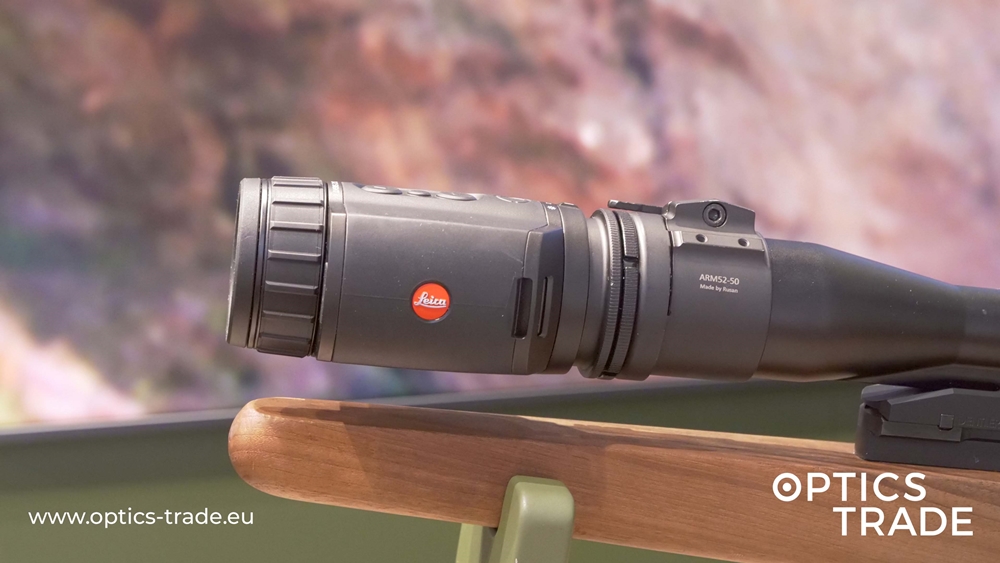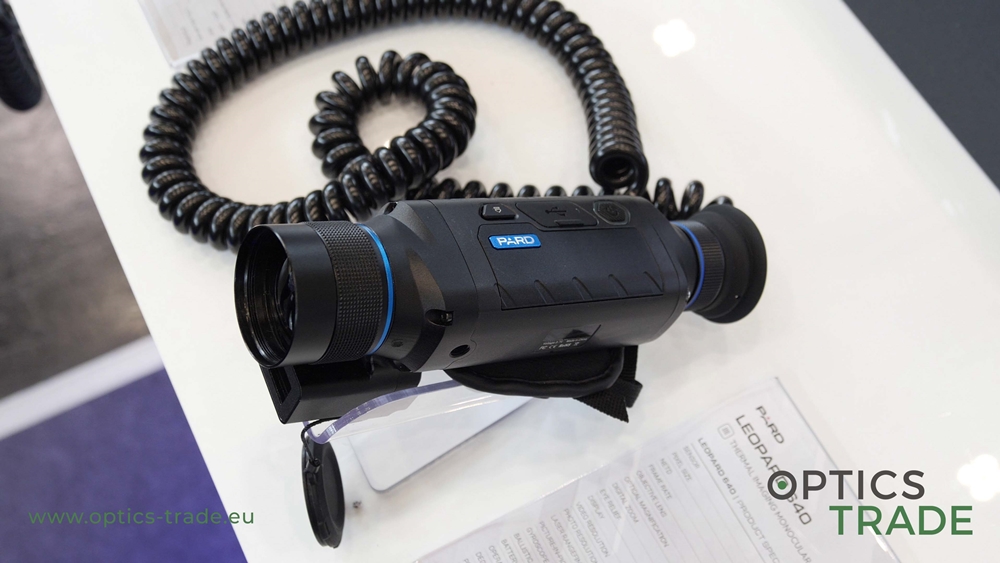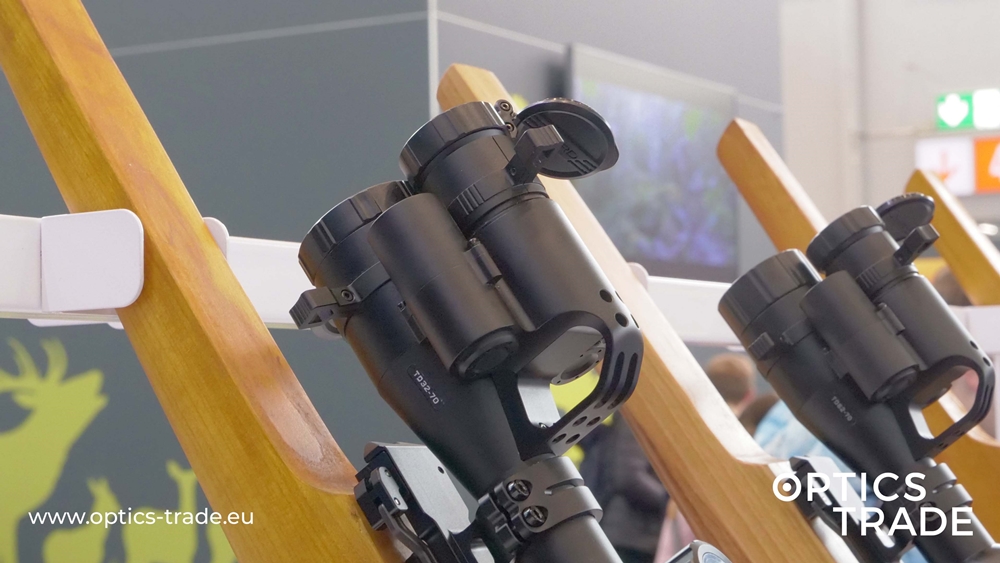Hello and welcome to another Optics Trade Debates video. Today we’ll be discussing thermal imaging clip-on systems, as you can see from the futuristic display on the table.
Thermal systems are a category of thermal imaging devices. Their structure is very similar to that of other NV devices. They consist of objective lens, the sensor, all the electronics and the display. The main difference is that, unlike all other thermal imaging devices, these thermal stems are used as stand-alone products.
Thermal clip-ons are intended to be used on daytime optics. In the video, we showed how to attach a thermal imaging clip-on system to a rifle scope but you could easily use binoculars or a monocular instead. By doing so, the user can convert their riflescope into a night vision thermal scope and still shoot with it.
Take note that some European countries allow these combinations and some do not. That’s why you must always check your local legislation before making a purchase.
Of course, the use of thermal devices is not restricted to the nighttime. In fact, they do not distinguish the difference at all. So, once the thermal clip-on is added to your riflescope or binoculars, you won’t have to pull it apart and back together depending on the time of day.
It’s important to know that the field of view will be affected by the thermal imaging clip-on. When using a clip-on system, the user looks through the ocular into the display.If the user turns up the magnification power of the daytime optical device too much, the result will be a pixelated display.
Still, as long as the user doesn’t enlarge the image to the maximum, they should have no problems using the daytime device and thermal imaging clip-on combo. The user will be able to spot warm objects and shoot – again, only if the country-specific legislation permits it.
Let’s move on to actual brands that produce these type of clip-on systems. Pulsar is one of the popular companies that makes quite affordable products by European standards. Although Pulsar already lowered the price point of these systems as of 2018, expect it to be lowered again in 2 or 3 years when Chinese manufacturers enter the European market.
Indeed, there has already been a surge in companies that added thermal imaging clip-ons to their sales catalog. Fortuna, for example, offers a variety of these products and of great quality to boot. Their clip-ons are really small, compact and durable. Night Pearl, the upscale Canadian GSCI, Armasight, Dipol, and Lithuanian Ados Tech are just some of the competitors.
Many customers are interested in the difference between thermal imaging clip-ons and the classic analog night vision clip-ons. In all honesty, the dilemma between buying one or the other is quite difficult. Therefore we will do our best to point out the differences between the two and hopefully make the customer’s choice at least more informed, if not easier.
The clear advantage of thermal imaging clip-on systems is in their detection range that is far superior to that of classic analog NV clip-ons. With the latter, even high quality devices won’t be able to perform beyond their maximum range of 250 metres. Now, take Pulsar Thermal Front Attachment Core FXQ50 for example. The user will be able to detect an animal at 1500 or 1800 metres.
The second crucial difference is important for shooters. With a thermal imaging clip-on, the user will be able to see what happens immediately after taking the shot. Let’s say that the animal runs into the forest. The hunter will be able to follow what’s going on without having to switch between two optical devices and losing track of the action.
Another advantage of most clip-on devices – either thermal or analog – is that when used on their own, they serve as a monocular. When buying clip-on products, the ocular part needed for the stand-alone use is almost always provided in the box.
Thermal imaging clip-ons do not age with time but that’s not true for analog NV devices. Some image intensifying tubes have a limited amount of operating hours and will start to fade once that limit is reached.
With newer thermal devices, the user will be able to take photos and film videos. Some might even allow for direct live-streaming. That is not possible with analog NV optics.
Thermal imaging clip-ons also fare better under weather conditions where there is mist involved. With fog, some performance quality will be lost but compare that to analog NV devices that would be rendered completely useless under the same circumstances.
Since thermal imaging devices do not emit any light, the game cannot spot the hunter that uses those. Analog NV devices, on the other hand, require an IR illuminator to perform at night and can alert animals that there is a human nearby.
Now, let’s move on the points in favour of analog NV devices. These also show the cold parts of animals. That’s especially important for trophy hunters. Even 50-millimetre lens of thermal analog devices will require that the animal comes really close, and even then, seeing details will be rather difficult. But the rendering of details is not a problem for analog NV devices.
The energy consumption is also much better with analog NV devices. The battery only has to be changed once per year. Compare that to thermal devices where the batteries have to be switched regularly with continuous use. By that we mean that the battery life runs out after 6 or 7 hours.
Analog night vision devices have a wider field of view. So it is easier to use them than thermal imaging clip-ons.
Price-wise, the two product categories are very similar. The average price for both a thermal imaging clip-on system and analog NV one is 4000 euros, with some exceptions. The prices range from one model to another just as much as they do between different brands.
When mounted on a riflescope, neither thermal imaging clip-on systems nor analog night vision ones should have much problem with recoil. But thermal imaging clip-ons might have a slight advantage here as well and can withstand even substantial recoil. (As a point of interest, see how Fortuna tests their thermal devices.)
As far as the sensors and display sizes are concerned, these are the specifications that change rapidly with the ever-evolving technology. Producers keep introducing new products at such astonishing rate and the size of display pixels and sensors keep getting smaller. With that, the image quality has also improved immensely.
In 2018, the majority of thermal clip-ons have a sensor with 380×280 pixels, give or take. So that’s a common size. For comparison, current models of higher quality have sensors of 600×480 pixels and that will only get better in the future. The standard pixel size at the moment is 17 microns.
In 2020, most will have the sensor resolution of 800×600 pixels. The predicted pixel size will be 12 microns.
The same goes for the displays. At the moment, most displays are around 640×480. Dipol already has them in 860×600 pixels. So, as we can see, the development is also quite rapid here. In half a year, we’ll be selling devices that are already exponentially better in accordance to these specifications.
Pulsar’s thermal imaging monocular Helion offers 7 different colour modes, while the Core model offers only one colour but with an option of choosing whether hot objects are shown as bright green or black. With other manufacturers like Dipol and Fortuna, the displayed image is in black and white. This is another thing that will most likely change in the future as manufacturers will offer a wider colour palette.
That will be all for today. If you are interested in more on thermal imaging clip-on systems, there are a few more Optics Trade videos available. Check the one where we talk about Pulsar Core products, clip-on adapters, compare different Pulsar Helion monocular models in the field and more!
Thank you for your attention. If we forgot to add anything, feel free to contact us through the comment section below or send us an email. Please like and share this video if you found it useful and, as always, subscribe to our YouTube channel. We’ll see you next time.
Products mentioned:
Thermal Imaging
Thermal Imaging Clip-on Systems





If I understood correctly, if you want to use it in front of a day scope, you don’t use the eye piece. The eye piece is used only in ‘stand alone’ configuration, for observation purposes.
So, for aiming, when mounted in front of the day scope, the scope will ‘look’ directly the display of the thermal clip on?
Exactly.